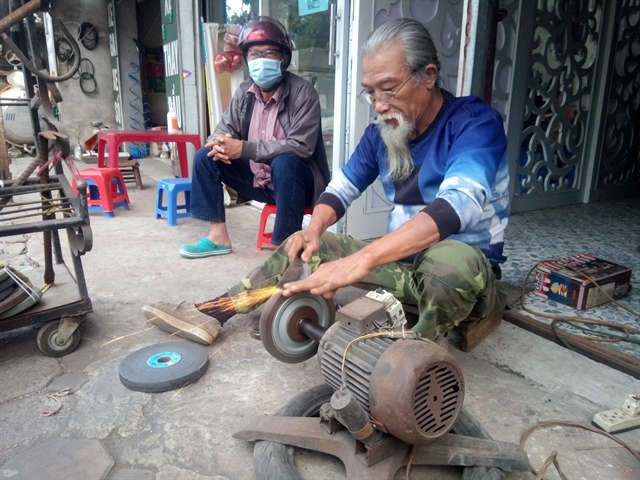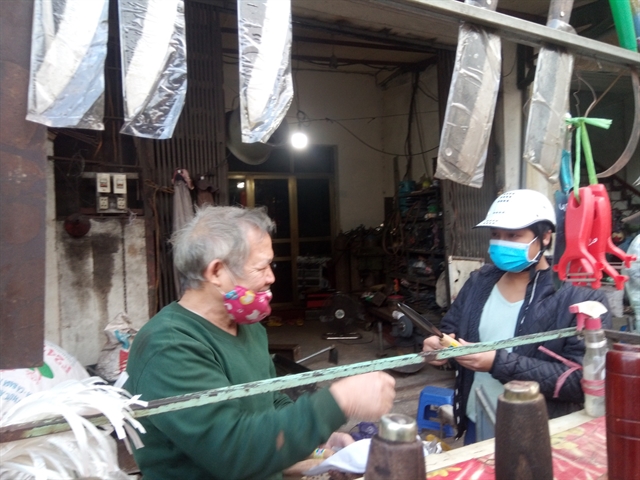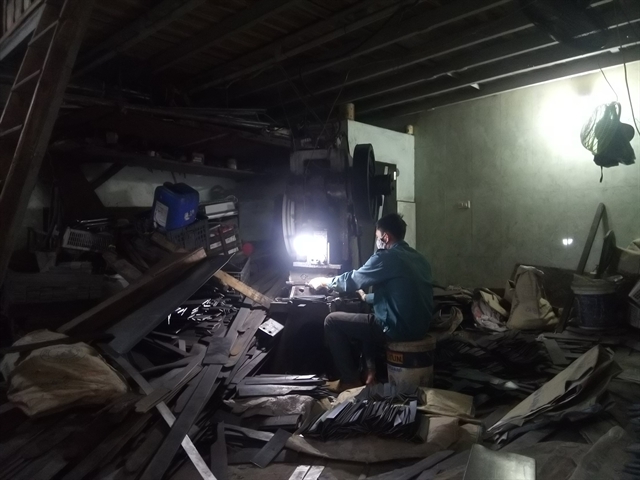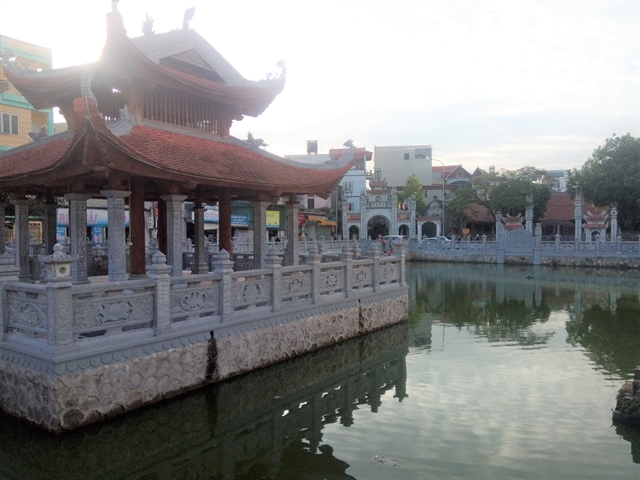Weather:
- Ha Noi 27oC
- Da Nang 29oC
- Ho Chi Minh 31oC

By Thanh Nga
The small road leading to Đa Sỹ forging village is winding. From afar, the sound of anvils and hammers can be heard.
Nestled on the gentle Nhuệ River, Đa Sỹ Village in Hà Nội's outlying district of Hà Đông has a history going back hundreds of years, being formed in the late 16th century. Through many ups and downs, the village has constantly developed and plays an increasingly important role in social life.
The village’s products such as knives, scissors, sickles, hoes, spades and other farm and domestic tools have spread to all regions in the country. After hundreds of years, Đa Sỹ people are still proud of their craft.
“My family has had six generations doing forging. This profession requires experience and skill. Customers directly come to my house to buy wholesale and retail,” master craftsman Nguyễn Hồng Phấn told Việt Nam News.
“During the recent COVID-19 outbreak, my family had to take two months off. Many people need to buy knives, scissors and other products, but because of the lockdown, they can't come to my house to buy them. When shops and businesses are reopened my loyal customers will come back. They don't want to buy elsewhere.”
Phấn’s products still retain the characteristics, durability, sharpness and sophistication of handmade products that cannot be made by machines.
“We fell in love with this profession and want to preserve the cultural essence of our craft village,” said Phấn.
Đa Sỹ products get their reputation from skilled steel tempering and the technique for making a knife-edge. A Đa Sỹ knife-edge is paper-thin but doesn’t bend. The secrets of steel tempering are handed down from generation to generation. It takes just a few seconds, or even a tenth of a second, to temper steel using water, wind, oil or banana tree trunk. Good steel tempered by wind quickly becomes blue and shining.
Craftsman Nguyễn Văn Mộc said that when he was small, he made friends with the flaming fire, the thumping hammers and the hissing of the cutters. Although more and more modern machines are used to shorten the processing time, he still chooses manual work to forge his knives and scissors.
“Nowadays, people can use a machine hammer to make this job less difficult, but doing it manually is still the best. If all the stages are done by machines, the life of the product will not be high,” he said.

Nguyễn Văn Long, a customer at the village, told Việt Nam News: “I often buy knives, scissors and farm tools here, although now the market also has many types of imported products. The price of Đa Sỹ village’s products is affordable and the quality very good -- that is the way to keep the traditional craft of the village.”
In addition to maintaining product quality, the dedication to the ancient craft is also a way to help the village survive. Anyone who wants to learn blacksmithing here does not have to pay, even people in other localities. This keeps future generations attached to the profession.
Pandemic efforts
To overcome the difficulties caused by the COVID-19 pandemic, the village has tried to find new ways to maintain the profession. The village has transformed its production, business and sales methods in accordance with the new situation, improving product quality, changing the way to approach customers and switching to selling online.
According to Mai Công Hưng, when the traditional markets were closed and traffic was difficult, his family switched to selling goods online, mainly via Facebook. Currently, he has a stable online customer base, mainly from HCM City and Hà Nội.
However, at a time when the coronavirus pandemic is still complicated, sales, as well as product transportation, are still the biggest barriers for craft village businesses.
Currently, banks in the area are implementing many forms of loan support for households in the village. Craft village enterprises not only have to maintain production but also take pandemic prevention measures, so they face many limitations in trading with customers in the pandemic areas.

According to Hoàng Quốc Chính, chairman of the Đa Sỹ Craft Village Association, the village has 1,163 households directly engaged in production and business. They supply 450 - 500 tonnes of goods to the market every month and gain an annual revenue of over VNĐ200 billion (US$8.7 million).
Blacksmithing activities also create more services and jobs for the locals. The average income of a worker is from VNĐ7 million to 10 million (US$434) per month.
When the COVID-19 pandemic is controlled, the village is expected to flourish with plans to develop tourism. Currently, the needs and tastes of foreigners are focused on traditional crafts because of their sophistication, national identity and general attractiveness.
Handicraft products of Việt Nam are now present in many countries around the world. However, the products of Đa Sỹ craft village are only available in Laos and Cambodia, not yet reaching other countries.
Chính said that the village needed to improve working techniques and product quality to export goods to foreign countries.
Hà Nội has a diverse geographical location and natural conditions, a long-standing history, several national heritage sites and many famous scenic spots, which all create favourable conditions for Đa Sỹ to prosper and develop tourism to introduce the traditional village to foreign tourists.

Đa Sỹ traditional craft village is also a historical and cultural area where tourists can not only admire the scenery but also visit the production site, interact with the craftsmen, and directly participate in making products.
The development of the village in combination with tourism contributes to promoting the export of local goods, creating more jobs and better incomes. It also helps the tourism industry promote the image of Đa Sỹ abroad. With the tireless work and commitment of its residents, the village will continue to forge ahead. VNS

